
Heaven Knows, Mr. Allison is a 1957 American CinemaScope war film directed by John Huston. It stars Deborah Kerr as an Irish nun and Robert Mitchum as a U.S. Marine, both stranded on a Japanese-occupied island in the Pacific Ocean during World War II.

Adventures in Paradise is an American one-hour television series created by James Michener and starring Gardner McKay, which ran on ABC from 1959 until 1962.
The Aberdeen Scandal was a military sexual assault scandal in 1996 at Aberdeen Proving Ground, a United States Army base in Maryland.

Michael Strank was a United States Marine Corps sergeant who was killed in action during the Battle of Iwo Jima in World War II. He was one of the Marines who raised the second U.S. flag on Mount Suribachi on February 23, 1945, as shown in the iconic photograph Raising the Flag on Iwo Jima by photographer Joe Rosenthal. Of the six Marines depicted in the photo, Strank was the only one to be correctly identified from the beginning; the other five were either assigned the wrong locations, or, were given the names of Marines who were not in the photo.
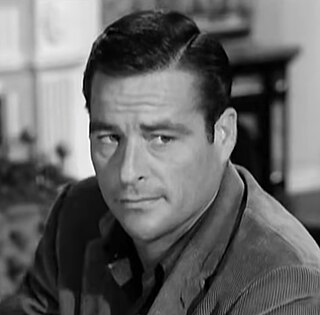
Robert Laman Webber was an American actor. He appeared in dozens of films and television series, including as Juror No. 12 in the 1957 film 12 Angry Men.

Hari Rhodes was an American author and actor whose career spanned three decades beginning around 1960.

The 1st Battalion, 7th Marines (1/7) is an infantry battalion of the 7th Marine Regiment of the United States Marine Corps. It is currently based at the Marine Corps Air Ground Combat Center Twentynine Palms. Consisting of approximately 1,000 Marines, it is part of the 1st Marine Division.
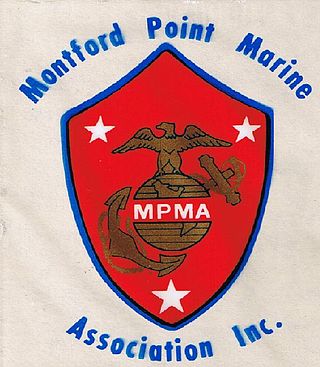
The Montford Point Marine Association (MPMA) is a nonprofit military veterans' organization, founded to memorialize the legacy of the first African Americans to serve in the United States Marine Corps. The first African American U.S. Marines were trained at Camp Montford Point, in Jacksonville, North Carolina, from 1941 to 1949.
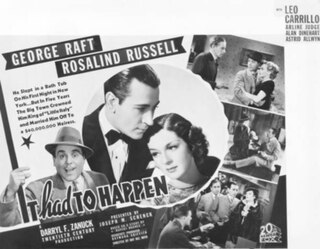
It Had to Happen is a 1936 American drama film starring George Raft and Rosalind Russell. The movie was written by Kathryn Scola, and Howard Ellis Smith, and directed by Roy Del Ruth. It is based on the 1909 short story "Canavan, the Man Who Had His Way" by Rupert Hughes.
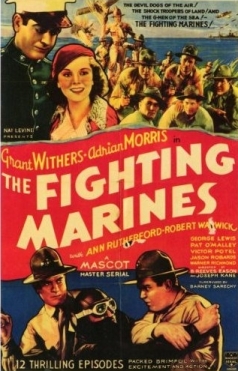
The Fighting Marines is a 1935 American movie serial. It was the last serial produced by Mascot Pictures before the studio was bought out and merged with others to become Republic Pictures. This new company went on to become the most famous of the serial producing studios, starting with Darkest Africa in 1936.

Laurence Haddon was an American actor, born in Philadelphia, Pennsylvania. Haddon appeared as a prolific actor in television, movies, and on the stage. He attended Friends' Central School and Syracuse University. He served in the United States Merchant Marine during World War II. Since 1958, he was married to actress/model Jacqueline Prevost with one son Michael, one daughter Phoebe, and one stepson. He died in Santa Monica, California, of "complications associated with Lewy body disease, a form of dementia," according to his daughter-in-law, at age 90 on May 10, 2013.

Dale Ishimoto was an American actor of Japanese descent. He was born in Delta, Colorado in 1923 and was raised in Guadalupe, California.

To the Shores of Hell is a 1966 Vietnam War film shot in Technicolor and Techniscope that was directed by Will Zens and starring Marshall Thompson, Richard Arlen, Dick O'Neill and Robert Dornan that was distributed by Crown International Pictures. Dornan may possibly have co-written the film as his mother's maiden name was "McFadden".

Eleanor and Franklin: The White House Years is a 1977 American Atelevision film and a sequel to Eleanor and Franklin (1976). Originally airing on March 13, 1977, it was part of a 2-part biographical film directed by Daniel Petrie based on Joseph P. Lash's Pulitzer prize-winning biography, Eleanor and Franklin, chronicling the lives of the 32nd U.S. President and the first lady. Joseph Lash was a secretary and confidant of Eleanor and wrote other books on the couple.

Marines, Let's Go is a 1961 CinemaScope DeLuxe Color Korean War film about three Marine buddies on shore leave in Japan and at war in Korea. It was produced and directed by Raoul Walsh, who also wrote the story. Walsh had previously had successes with films about the U.S. Marine Corps in World War I, the 1920s, and World War II. This was the next-to-last film of Walsh's long directing career.

The D.I. is a 1957 American military drama film starring and directed by Jack Webb. The film was produced by Webb's production company Mark VII Limited and distributed by Warner Bros.
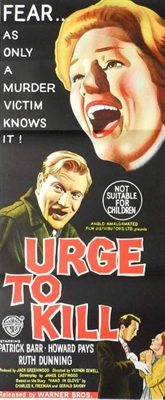
Urge to Kill is a 1960 British second feature serial killer film directed by Vernon Sewell and starring Patrick Barr, Ruth Dunning and Terence Knapp. The screenplay was by James Eastwood based on the 1942 novel Hughie Roddis and 1944 play Hand in Glove, both by Gerald Savory.
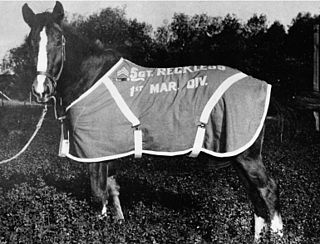
Staff Sergeant Reckless, a decorated warhorse who held official rank in the United States military, was a mare of Mongolian horse breeding. Out of a racehorse dam, she was purchased in October 1952 for $250 from a Korean stableboy at the Seoul racetrack who needed money to buy an artificial leg for his sister. Reckless was bought by members of the United States Marine Corps and trained to be a pack horse for the Recoilless Rifle Platoon, Anti-Tank Company, 5th Marine Regiment, 1st Marine Division. She quickly became part of the unit and was allowed to roam freely through camp, entering the Marines' tents, where she would sleep on cold nights, and was known for her willingness to eat nearly anything, including scrambled eggs, beer, Coca-Cola and, once, about $30 worth of poker chips.

The Marines Come Thru is a 1938 American action film directed by Louis J. Gasnier and written by D.S. Leslie and Jack Kofoed for Grand National Pictures. The film stars Wallace Ford, Toby Wing, Grant Withers, Sheila Lynch, Michael Doyle and Don Lanning. The film was rereleased on July 8, 1943, by Astor Pictures as Fight On, Marines.

















